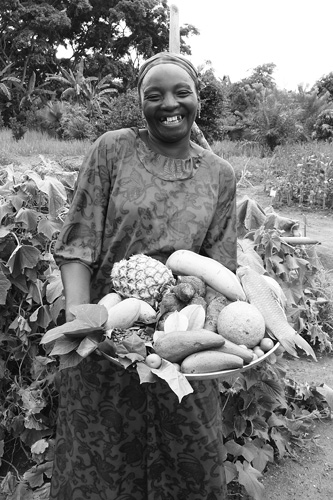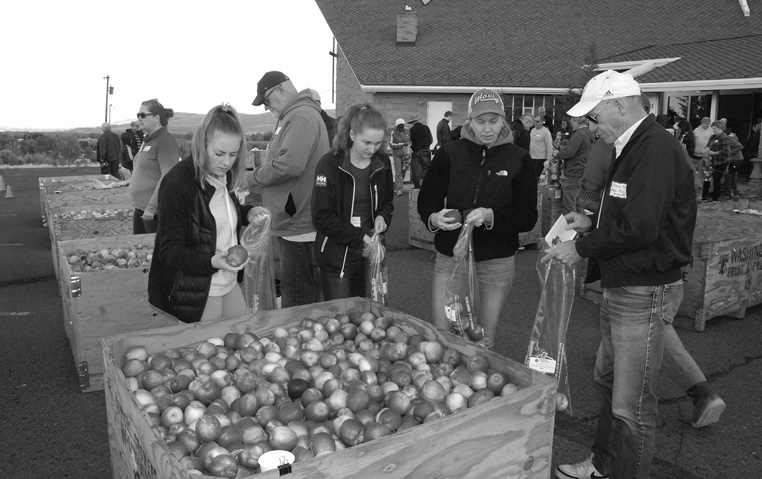Growing Hope for 25 years
While sitting on metal folding chairs in the back of the sanctuary of Wiley Heights Covenant, just outside of Yakima, Washington, a church I was then pastoring, something “dangerous” happened. In conversation with Jim and Carol Sundholm and a staff member from Growing Hope Globally, I heard about this organization they were so fond of, and it changed the direction of my life and career.
Jim was recently retired as Director of Covenant World Relief and Development (CWRD), which had been a member of Growing Hope nearly since its inception. Originally known as Foods Resource Bank, for 25 years Growing Hope has been responding to hunger by accompanying farmers in the developing world to give them a hand up and the dignity of raising their own food to care for themselves, their families, and their communities. It’s work that wouldn’t be possible without farmers and people in their churches and communities in the United States becoming inspired to join in supporting long-term solutions to hunger. Their models of fundraising are called Growing Projects, in which farmers leverage their own farming businesses as a means to raise funds for agricultural development projects in rural communities in the developing world. Jim and the others explained the details of how this all worked, and put it in context by sharing the story of Mariam in the Central African Republic.

Mariam had been abandoned by her husband and not long after her sister died in childbirth, Mariam became the adoptive mother of her niece. Named Beautiful, her niece was born with a severe breathing issue and also suffered from malnutrition early on. Mariam went in search of a doctor who might be able to help her to no avail until she learned of a Swedish Mission hospital in Gamboula in the Central African Republic. There her daughter was able to receive much needed health care, but that is not all that they received. On the hospital grounds was a nutritional garden, one small piece of a greater ministry known as Centre d’Expérimentation et de Formation Agricole (CEFA), a research and training farm in the Central African Republic, started in part by Covenant Missionaries Roy and Aleta Danforth. The nutritional garden provided knowledge and skills to families of patients, while their loved ones received necessary medical care. Mariam was able to return home with not just her niece’s health restored, but an ability and confidence to start her own garden. Her newfound faith in Christ came simply by working elbow to elbow in the garden with believers. Mariam and Beautiful thrived and she felt she had a “debt of gratitude” to return to the garden in order to give thanks and teach others what she had learned.
That story, among others, touched those around the circle in the back of our sanctuary in Wiley Heights, but we had so many questions on what we might do. Growing Hope’s Growing Projects are primarily located in the Midwest, utilizing the financial proceeds of a portion of harvests of crops like corn or soybeans. These proceeds, along with financial and in-kind donations, provide the assistance that Growing Hope can invest in development projects.

In Eastern Washington, one of the main crops is apples, so this was a natural project for us at Wiley Heights to explore. Through a journey of ups and downs, God’s unique timing and provision, we partnered in a project known as Sharing the Harvest. Since 2012, Sharing the Harvest has offered a direct sale of apples to congregations across the Pacific Northwest Conference of the Evangelical Covenant Church. Those apples are donated from Yakima Valley orchardists and stored in donated cold storage. Congregations hold pre-sales for the apples in September and on the last Saturday of October more than 200 people travel to Wiley Heights Covenant, the “church on the hill,” where they are treated to lunch, a short presentation, cider pressing, pumpkin painting, and then are put to work bagging up the apples. It has become a family friendly “day in the country,” but also an opportunity for people to donate their own labor and offer transport of the apples back to their respective congregations. This system of combining these community activities and transport of the produce maximizes the impact of the event. As a result, nearly 4,000 people have been moved towards food security through investments in the Central African Republic and a program that empowers women in agriculture in Kenya.
That story of Sharing the Harvest is one that is repeated across the country, as local, usually rural, communities and individuals are leveraging the best of what they have to make a global impact. It is work composed of people from across the Christian spectrum, as partnerships range from Catholic Relief Services to Nazarene Compassion Ministries to Lutheran World Relief and several other Christian relief and development organizations.
In 2021, God’s calling led me to work full-time with these Growing Projects in the Upper Midwest region. I have discovered in criss-crossing county highways and gravel roads that there are many farmers and their friends who have found a way to put their faith into action with a Growing Project. The impact over these 25 years for Growing Hope has totaled over 47 million dollars and 2.3 million people who have been helped “grow lasting solutions to hunger,” as we like to say. But there is another form of impact among those who contribute in labor, time, and resources. I remember early on in my work, sitting across the kitchen table in Northeast Iowa from three members of a local Growing Project, who each in their own words, some with tears in their eyes, shared how this work has been one of the most meaningful things they have ever been a part of. I have had pastors tell me of people who have engaged in their congregations for the first time, because this work gave them an on-ramp to reimagine community and what it means to practice their faith in this world.
Responding to hunger is one of the few social issues that most people have some common agreement around in our polarized society. When it comes to the methodology of agricultural development—equipping people with knowledge and skills to grow, store, and market their own food—I have found few if any critics. I have seen people from both ends of the political spectrum talk politics and press cider together with smiles on their faces and neighbors who couldn’t get along find some healing through shared work on a shared piece of land. Time and again churches from different traditions will testify they never did anything together until they started a Growing Project. It appears hope is growing all around the globe, even close to home.
In my role now working full-time with Growing Hope, I warn the congregations I meet with that fellowship halls, sanctuaries, and pole barns are “dangerous” places. For that is where the Spirit might move, giving them an opportunity to be part of God’s work in the world that will make a global impact and grow hope in their own lives, as it has for so many for 25 years before them.
For more information on Growing Hope visit: www.GrowingHopeGlobally.org
